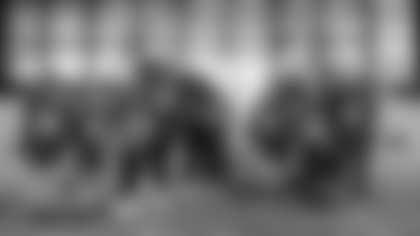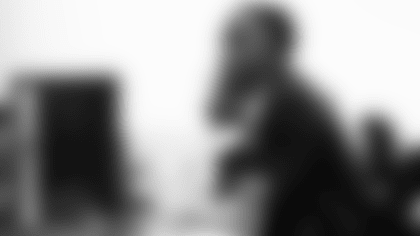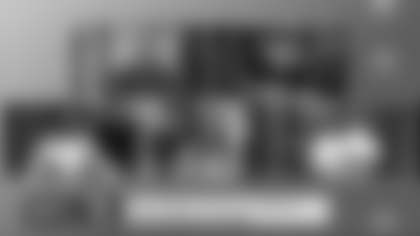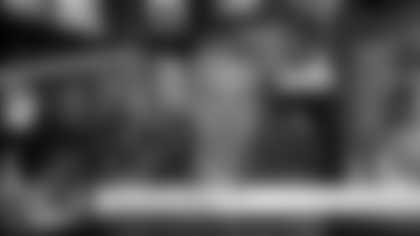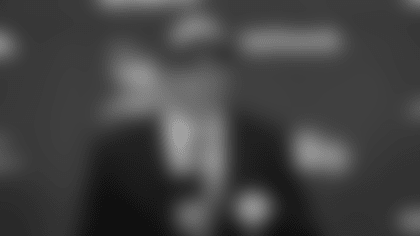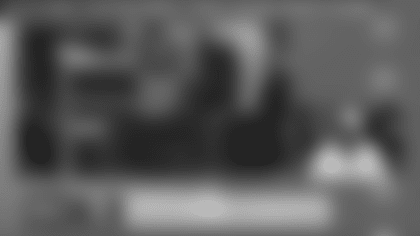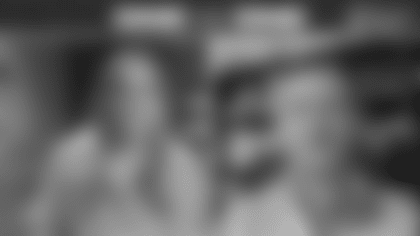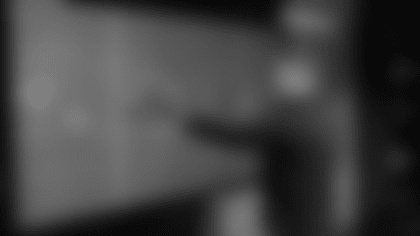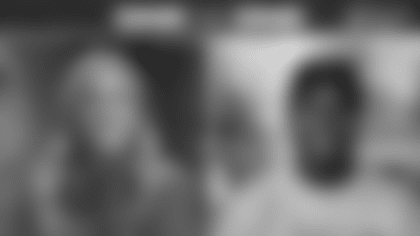Steve Berg hardly recognizes his surroundings when he stands in the Downtown Commons Park and looks to the east.
U.S. Bank Stadium, with its soaring glass and steel, reaches 271 feet into the air and reflects the Minneapolis skyline. He can look to his left or right and see how his neighborhood has been transformed with more than a billion dollars of new construction in the vicinity of the $1.1 billion state-of-the-art venue.
Berg covered the construction of the 1.75-million-square-foot facility that hosted its first regular-season game on Sept. 18 for a coffee table book, U.S. Bank Stadium: The New Home of the Minnesota Vikings, published by the Minnesota Historical Society and available now at **vikingsfanshop.com**.
The freelance writer and urban design consultant, who lives near the stadium, worked at the Star Tribune for 31 years. About half of his career at the newspaper was spent in the Washington bureau, and he covered the 1984, 1988 and 1992 presidential campaigns.
Berg became an editorial writer in 1998 and held that post for seven years, based out of the former Star Tribune building that was replaced by the Downtown Commons, a public greenspace full of festivities on game days for fans with or without tickets.
In the years since completing his career at the newspaper, Berg wrote a book about the construction of Target Field. The process for the book about U.S. Bank Stadium lasted about 14 months, with Berg retracing the legislative process, chronicling the revolutionary design and construction and completing it with an assessment of how the facility hosts games.
The book will be officially launched with an event from 7-8:30 p.m. on Nov. 15 at the Minnesota History Center in St. Paul. The event is free but an admission fee is required to visit the Gridiron Glory exhibit. Click here for more information.
Below are highlights from a Q & A with Berg:
What did you bring from writing the book about Target Field into this experience?
Well, the books are very much alike. This one tells the political history of the stadium. It talks about the design and the reasons why the architects drew it the way it came out. It talks about the construction, and it talks about the experience of going there and enjoying it.
As a form, the book and the experiences were very much alike, even though the buildings were quite different.
Vikings General Manager Rick Spielman has used the phrase, "working in buckets" to maintain focus through completion of one task while multiple things are ongoing. Is that how you were able to complete the different chapters in waves?
That's a great way to think about it. I think that's the only way to do these books if you're going to do them relatively quickly, to concentrate on, let's say a political history chapter, get that out of the way, then concentrate on the design chapter because the building is designed basically in past tense by the time you're writing it, get that out of the way so the publisher has it, and then go into the construction because that's ongoing.
As far as the experience of the stadium, you're not going to be able to fully understand it until it opens up, so that's the last thing you tend to write about. In the construction world, that would be called a design build-project. You're designing it sort of as you go along building it. It's the same way in writing a book about all of this. If you had to wait until it was all done, you'd never finish it on time. Working in buckets is really good, and it helps you concentrate and organize information as you go along.
How do you think the stadium is better by being built now than five years or 10 years ago?
Any architect will tell you that the longer you have to look at something, the better it's going to be. The more you can put the idea through various tests in your shop, with the public and with your client, the better the building turns out. [HKS architect] Bryan Trubey started working on this building in 2008 and didn't really finish it up until 2014 or so. That's a lot of time to noodle over a building, and it's bound to improve. They got a lot better ideas at the end than at the beginning.
Technology is a big thing. Technology is constantly changing. If this building had been built five years ago, you wouldn't have had the cell phone coverage in the building, the app, you wouldn't have a lot of the technology that's built into the video boards. All of those things would have been different and would have needed to be updated more quickly, so it really helps on the technology front.
This building is a prototype, too, in a lot of ways. It's the first of a kind, really the first indoor-outdoor stadium in the NFL. When I say that, you realize that when I was watching the game against the Houston Texans, I was watching on television and I would have sworn the game was outdoors. I saw people wearing sunglasses in the audience, the shadows, and all of that looked as if it was an outdoor game. … It's something new, and I don't think it's been recognized as much as it should be recognized that this stadium is of a different type, a sort-of fourth type. You've got your indoor, your outdoor, the retractable roof, and now there's this.
You attended the two preseason games and the game against the Packers. What were your strongest takeaways from attending games in person?
The takeaways for me, I don't know how to separate the fact that I ordinarily don't attend NFL games, I was blown away at the Packers game by the enthusiasm of the crowd, how the crowd was into it, how loud the crowd was. I don't understand how the visiting offense can operate. It was very impressive.
I thought [Vikings Vice President of Content and Production] Bryan Harper did an amazing job of orchestrating the game experience. I thought it was great. I left that game being extremely impressed by the building and how the game was presented in the building.
As I've said many times, I think the biggest architectural thrill of being in the building happened to be when the game wasn't actually going on, but the first time they opened the doors. I stood in the threshold of those big pivot doors, and it was a sunny afternoon. I had a sensation that I've never had before where I didn't know whether I was inside or outside, and that's exactly what the architect is trying to achieve here.
Normally when you go through a big door, let's say St. Patrick's Cathedral in New York, you're going from a busy Fifth Avenue, noisy, bright into a dark, quiet space and everything changes. Here there is no change. It's the absence of transition that gives you a kind of psychic confusion about whether you're inside or outside, and the space inside is so vast and so bright. I think that's the most brilliant thing about the building.
What did you think of the breaks between game action?
I didn't think there were any lulls. The pacing was amazing. All of a sudden, there were the Purple People Eaters, and then there was Fran Tarkenton and all of these moments from the history of the team.
It was frankly less commercialized than I was expecting. The Vikings said this to me, but I didn't really believe it until I really saw it. Yeah, there are sponsors, and they're important and visible within the interior of the building, but sponsorship in and of itself isn't emphasized. It's all part of the football product. ... It wasn't like, 'We're going to have a commercial now.' The commercial has an association with the game that's ongoing, and I think that's really good. It's not like, 'OK, we're going to be selling a product now.' It's integrated within the game.
What chapter was the most difficult to write?
That's a good question. I think it was actually the architecture chapter. I expected it to be easy, but the process that these guys went through was extraordinary, and I think readers are going to be helped by understanding that these guys turned themselves into anthropologists first and they really studied the landscape and culture of Minnesota.
It's not just an ego trip for architects, 'Here's a monument I'm building to myself.' There's a reason for the pitched roof, for the angular look. They studied rock formations in the Mississippi River and on Lake Superior. They studied ice and rock and Nordic roots and buildings in Scandinavia and light angles and all kinds of things to come up with this monumental structure.
Weaving all of that together, the function and style of it all together was surprisingly difficult to write about and not straightforward because it tied into construction, it tied into experiences. It even tied into the political history of the building. I don't know why that was harder for me to grasp because basically I write about architecture for a living.
How have you seen your neighborhood transform?
It's really disorienting, standing outside of Club Purple on that deck, looking out from the area of the Guthrie Theater, the panorama. You don't know where you are. I worked in the [former Star Tribune] building, it used to be a building where The Commons now is, and I don't recognize the place, and that's good. A big change.
How did you celebrate wrapping the book?
My wife and I went to the Red Cow in the North Loop and had a burger.



